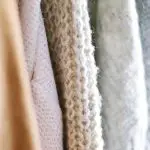If you've ever had the unfortunate experience of finding slime on your favorite cotton t-shirt, you know the panic that sets in. But fear not, because vinegar is here to save the day!
In this guide, you'll learn how vinegar can rescue not just cotton, but also wool, silk, linen, and synthetic fabrics from the clutches of slime.
With just a few simple steps, you can master the art of using vinegar to restore your beloved fabrics to their former glory.
So, say goodbye to the stress of slime mishaps and hello to the power of vinegar!
Key Takeaways
- Vinegar effectively removes slime from cotton and wool fabrics.
- Vinegar can be used to clean and condition wool, silk, and linen garments.
- Vinegar is a natural alternative to harsh chemical cleaners for synthetic fabrics.
- Vinegar acts as a fabric softener for silk, linen, and wool garments.
Cotton
If slime has made its way onto your cotton fabrics, vinegar can effectively rescue them. Cotton restoration with vinegar offers numerous benefits. The acidic nature of vinegar makes it a powerful ally in the battle against slime on cotton. Not only does it effectively break down the slime, but it also helps to lift the stain and restore the fabric to its original state.
To begin the cotton restoration process, mix equal parts of white vinegar and water in a spray bottle. Liberally spray the affected area and let it sit for a few minutes. Gently blot the area with a clean cloth, taking care not to spread the slime further. Repeat the process until the slime is completely removed. Once the slime is gone, wash the fabric as usual to remove any lingering vinegar smell.
Vinegar's benefits extend beyond its ability to rescue cotton from slime. It's a natural and cost-effective solution that's gentle on fabrics, making it an ideal choice for restoring cotton garments. With vinegar, you can effectively salvage your favorite cotton items from the clutches of slime.
Wool
When dealing with slime on wool fabrics, start by soaking the affected area in a mixture of white vinegar and water for a few minutes. Wool is a delicate fabric that requires special care, and vinegar can be a game-changer in maintaining its integrity. The acetic acid in white vinegar works wonders in breaking down the slime and removing any residue from the wool fibers. Vinegar also helps neutralize odors that may linger after dealing with the slime, leaving your wool garment fresh and clean.
In addition to slime removal, vinegar benefits wool care in various ways. It helps to soften the fibers, reduce static, and brighten the colors. When mixed with water, vinegar can be used as a gentle wool wash to clean and condition your wool garments. Its natural properties make it an excellent alternative to harsh chemical cleaners, preserving the quality of your wool items.
Silk
To effectively remove slime from silk fabrics, start by gently dabbing the affected area with a solution of white vinegar and water. Silk is a delicate fabric, and using vinegar can help preserve its quality while effectively tackling the slime. The acetic acid in vinegar helps break down the slime and remove any residual stains without causing damage to the silk fibers.
Here's a handy reference for silk care and the benefits of using vinegar:
| Silk Care | Vinegar Benefits |
|---|---|
| Use cold water for washing silk garments. | Vinegar is a natural fabric softener and can help restore the softness of silk. |
| Avoid wringing or twisting silk items. | Vinegar helps to neutralize odors, leaving silk garments smelling fresh. |
| Test any cleaning method on a small, inconspicuous area first. | The acidic nature of vinegar makes it effective in dissolving slime without harming silk fibers. |
| Seek professional dry cleaning for tough stains. | Vinegar is a cost-effective and eco-friendly alternative to harsh chemical cleaners. |
| Store silk items in a breathable fabric garment bag. | Vinegar can act as a natural preservative, extending the lifespan of silk items. |
Linen
When removing slime from linen fabrics, start by gently dabbing the affected area with a solution of white vinegar and water. Linen is a delicate fabric that requires special care when it comes to stain removal. White vinegar not only helps to lift the slime from the fibers but also acts as a natural fabric softener, leaving your linen feeling luxuriously soft and clean.
To tackle tough slime stains on linen, mix one part white vinegar with two parts water in a spray bottle. Lightly spritz the affected area and allow the solution to sit for a few minutes. Then, using a clean cloth, gently dab the slime to lift it from the fabric. Avoid rubbing, as this can push the slime further into the fibers.
Once the slime is removed, rinse the area with cold water and allow it to air dry. In addition to its stain-fighting properties, white vinegar also helps to naturally soften linen, making it a versatile and effective solution for maintaining the beauty and integrity of this exquisite fabric.
Synthetic Fabrics
If you have slime on synthetic fabrics, you can use a solution of white vinegar and water to effectively remove it without damaging the fabric. Synthetic fabrics such as polyester, nylon, and acrylic are resilient to vinegar and can benefit from its stain removal and odor elimination properties.
Here's how to use vinegar to tackle slime on synthetic fabrics:
- Pre-treat the Stain:
- Mix equal parts of white vinegar and water in a spray bottle.
- Spray the solution directly onto the slime stain and let it sit for 5-10 minutes.
- Gentle Scrubbing:
- Use a soft-bristled brush or an old toothbrush to gently scrub the stained area.
- The vinegar solution helps to loosen the slime from the fabric fibers.
- Rinse Thoroughly:
- After scrubbing, rinse the fabric under cold water to remove the loosened slime and vinegar solution.
- Air Dry:
- Allow the fabric to air dry.
- The vinegar will help to eliminate any residual odor from the slime, leaving your synthetic fabric fresh and clean.
Frequently Asked Questions
Can Vinegar Remove Slime From Delicate Fabrics Like Silk?
Can vinegar remove slime from delicate fabrics like silk? Vinegar is effective in removing slime from delicate fabrics like silk. It's important to dilute the vinegar, test in an inconspicuous area, and gently dab the affected area.
Will Vinegar Cause Any Damage to Synthetic Fabrics When Removing Slime?
Using vinegar to remove slime from synthetic fabrics is effective. Apply a solution of water and vinegar, then gently scrub. Vinegar won't damage synthetic materials, making it a safe and efficient option for slime removal.
Is It Safe to Use Vinegar on Wool Fabrics to Remove Slime?
Using vinegar on wool to remove slime is safe. Vinegar effectively breaks down slime without harming wool. It's a gentle and natural solution for slime removal from wool fabrics. You can trust vinegar to rescue your wool.
How Should I Apply Vinegar to Linen Fabric to Effectively Remove Slime?
To effectively remove slime from linen fabric, apply vinegar directly to the affected area and gently scrub with a soft brush. Rinse with cold water and air dry. Avoid using vinegar on delicate fabrics to prevent damage or discoloration.
Can Vinegar Be Used to Remove Slime From Cotton Fabrics Without Causing Any Discoloration or Damage?
To effectively remove slime from cotton fabrics without causing discoloration or damage, vinegar can be used. Its effectiveness lies in its application method. Apply a vinegar solution to the affected area before washing as usual.
- Duchess Fabric Price in the Philippines: A Shopper’s Sourcing Guide - June 24, 2025
- Duchess Fabric Price in Nigeria: What to Expect in 2024 - June 24, 2025
- 100% Silk Duchess Satin: The Unmatched Quality of Pure Silk - June 24, 2025







